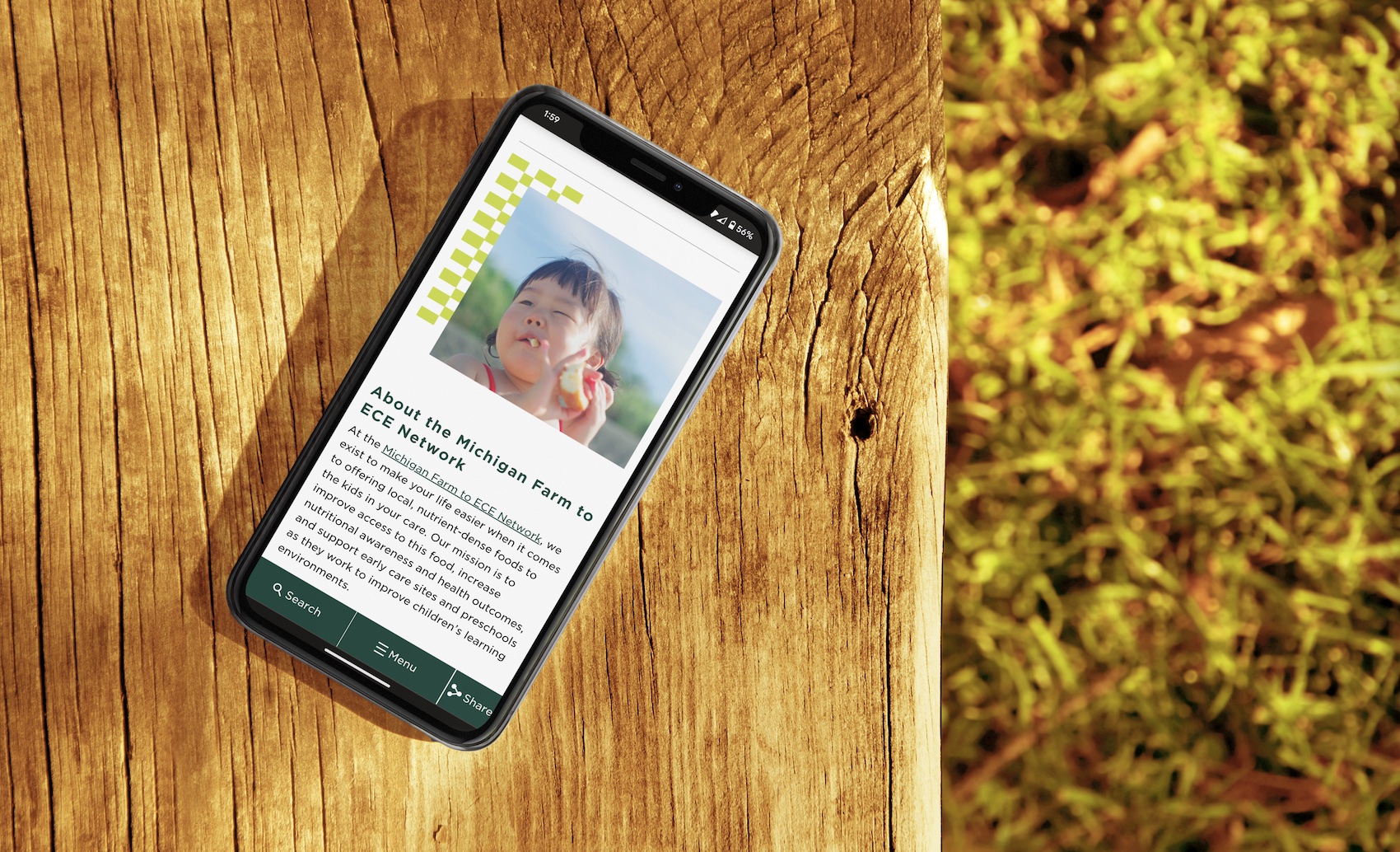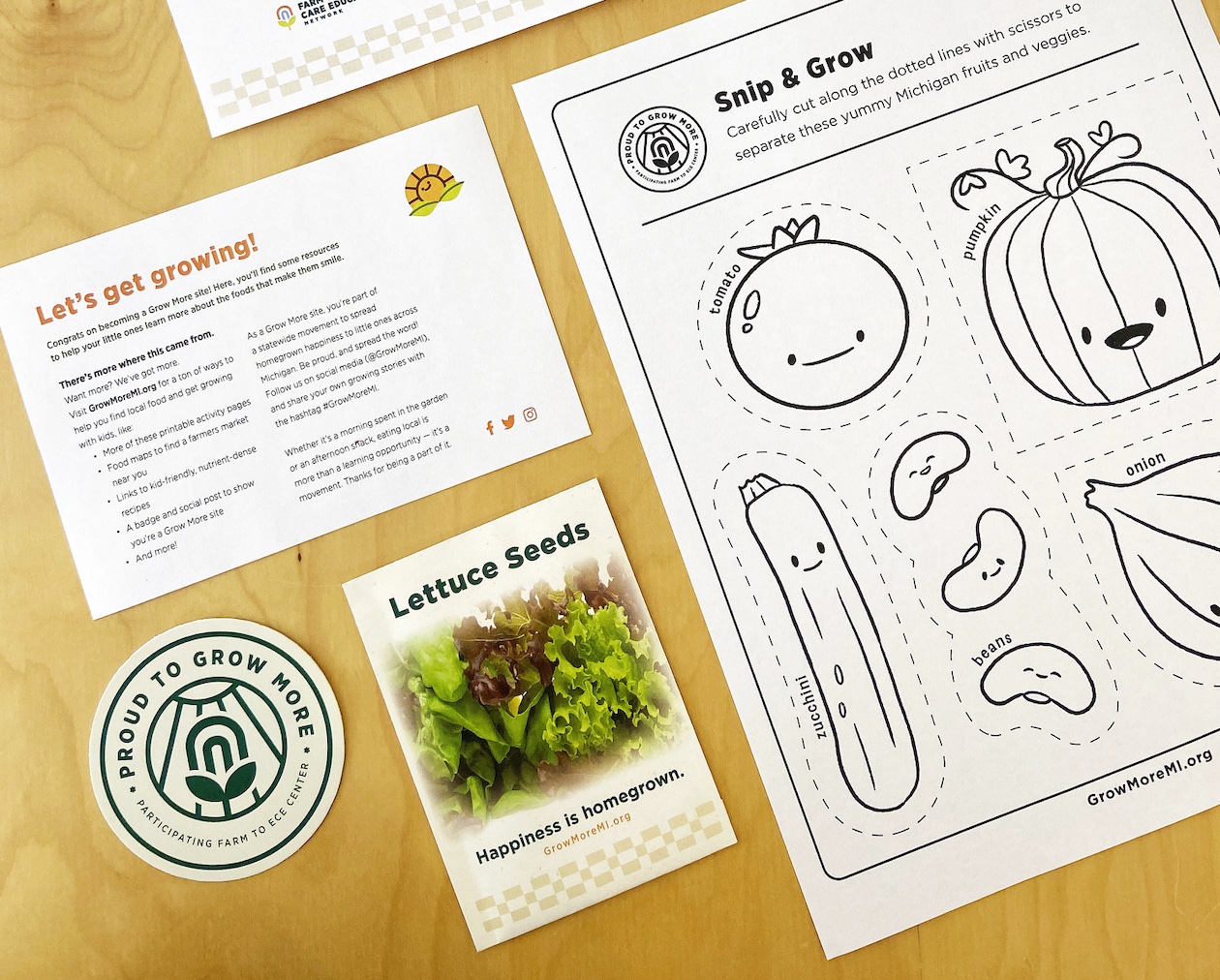A campaign is only as strong as its audience’s bandwidth. If your tactics don’t merge seamlessly into the lifestyles of those you’re trying to reach, you might as well be screaming into the void. But when done correctly, meeting audiences where they are can help not only improve a campaign’s recall and return on investment, but can inspire us to think outside the box when it comes to creative mediums and deliverables.
Recently, we partnered with the Center for Regional Food Systems at Michigan State University on their “Grow More” campaign, launched as part of its Michigan Farm to Early Care and Education (ECE) initiative. They sought a social campaign that would encourage child care providers to grow and eat more local, nutrient-dense foods with the children in their care. This was specifically targeted to the Battle Creek, Detroit, and Grand Rapids markets, aiming to reach providers in urban communities that statistically faced more limited access to grow and consume local produce. But before we got started, we had to understand the landscape.

Big-picture considerations
Any parent knows that early childhood is a critical stage — and this is especially true when it comes to kids’ relationships with food. That’s why establishing a culture of not only eating healthy foods but also understanding where they come from is so important, and why Michigan Farm to ECE set their sights on an audience of child care providers and professionals, uniquely positioned to reach little ones.
Still, we knew adequately resonating with this group would have its challenges. The child care industry has long been facing a monumental labor shortage, both within Michigan and across the country. According to the U.S. Bureau of Labor Statistics, while there were about 28,000 child care workers in Michigan as of August 2023, there were an additional 9,000 vacancies for child care educators and aides in the state. This reveals the need for a 32% labor increase to adequately meet demand. This signaled to us that we would need to overcome limited time and resources and prohibitive costs with intentional, comprehensive tactics. So, we got to work developing strategies that would boost, rather than drain, our audience’s capacity. We would need to give, rather than ask.

Thinking outside the box
First, we brainstormed what deliverables and mediums would actually enhance child care providers’ day-to-day operations. Kids’ activity sheets, stickers, and quick, go-to digital resources came to mind. After creating a campaign identity and comprehensive marketing plan, we wrote and designed a website for the campaign with handy resources, tools, and tips about growing or eating local produce. From activity sheets, to quick food preservation tips, to a badge that shows providers' affinity and amplifies their own brand, we addressed the ever-present “What’s in it for me?” audience component to drive leads to the site.
Then, of course, came the Little Sprouts Learning Bundle. Providers in target geographic markets could elect to receive a starter kit package, complete with seeds, a decal, activity sheets, and more information to get them excited about eating and growing local produce. This wasn’t just about getting seeds in the audience’s hands; it was about getting them excited about the Grow More movement, and providing small steps they implement right away. Because what better way to literally meet providers where they are than a package of resources mailed to their door?

Establishing a positive connection
As with most campaigns, this project wasn’t about the literal yield; it was about the process of growing. Sure, in a perfect world we’d want child care providers to see the campaign and immediately get the kids shoveling in a garden out back whilst munching on a fresh stalk of local celery they grew with their own, tiny hands. But we knew, realistically, that exact image wasn’t feasible for the vast majority of providers. What was more important, at this point in time at least, was meeting them where they were, with respect for their limited time and resources. We developed flexible tactics to emphasize the positive emotional impact of eating local, as to establish a positive association with growing nutrient-dense foods.
Instead of asking an audience to drastically change their processes, invest significant time or funds, or add one more thing to their already busy schedules, we can meet them where they are.
